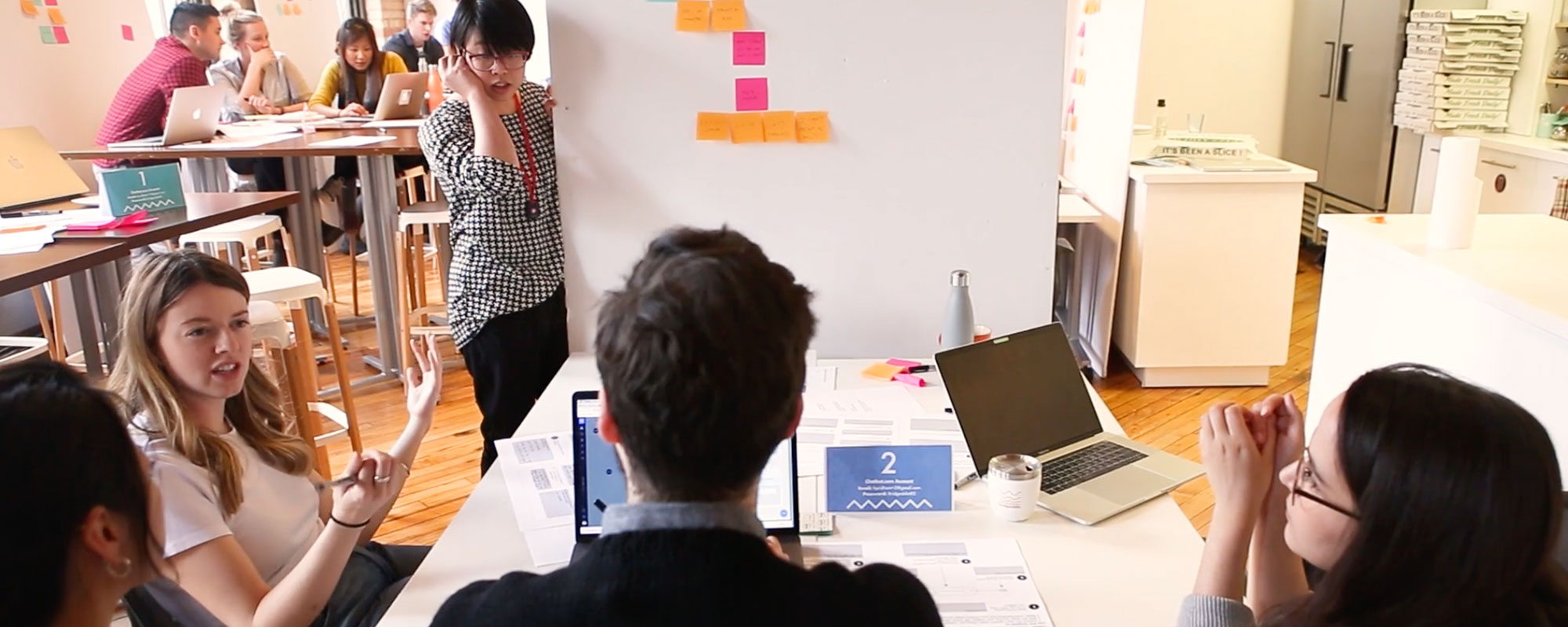
Ideas by Bridgeable
Design sprints: Creating more agile organizations
In a rapidly changing business landscape, large organizations need to become more agile to stay competitive. Design sprints can help by solving critical business challenges quickly while making sense of complexity and driving organizational change.
Author
- Bridgeable
Sectors
Offerings
[Transcript]
Dr. Tim MacLeod, Director, Design Strategy: There’s a big shift that’s happened for large organizations, who now need to move very quickly and become a lot more agile. The business models and strategies of large organizations are being fundamentally changed by new technology-enabled companies. Apple is competing with banks now. Uber and Lyft are competing with transit agencies. To stay relevant, large organizations need to cut through inertia and complexity and be able to move at the pace of small, technology-enabled companies.
Brendan Polley, Biomedical Communications Design Lead: There’s definitely a need to stay competitive in a market where both technology and user needs are getting more complex. Agile and sprints helps address that by creating an organizational shift in your team.
Lena Rubisova, Service Design Lead: If we’re able to move quickly and take that agile approach to how we solve problems, [if] something new comes up, we can incorporate that into how we understand the solution that we’re offering.
Tim: A design sprint is a process for solving a critical business challenge quickly, usually in a time frame between one and three weeks. When companies are looking to become more agile, sprints are a really effective way to help drive that organizational and cultural change. Agility is a way of chunking up problems and moving very quickly so that we’re constantly testing new ideas with customers and with internal teams who need to deliver.
Brendan: Customer collaboration is key to the decision-making process in both agile and design sprints.
Lena: You start with a hypothesis about what you expect to find as a result of your research, and then you constantly come back to it when you start to get your actual output. If we do a little bit research, we gain one little bit of understanding, [then] maybe create some kind of a prototype around it, [and then] bring that knowledge into the next step.
Brendan: It gives you the opportunity to hear the voice of your customer, to validate your prototypes with them and not just [with] your team before building out these products.
Lena: We’re constantly learning more and we’re constantly building more, so that by the time we get to the end, the final product is … made up of all the learnings along the way rather than learnings from a long time ago.
Tim: Instead of going away and making a painstaking report with that data, we actually identify what are the four key things we’ve learned from users and test our learnings by actually turning them into early solutions or prototypes. And then we immediately go back out to users and test those prototypes.
Lena: I think at the very end, our clients feel like they have a lot of ownership over the work that we provide them with, because they were such a big part of helping create it.
Tim: We’ve taken a lot of the tools and some of the ways that we build velocity in design sprints. But also, [we’ve] been very thoughtful about how we thread a large organization into the fabric of a design sprint, so that we’re actually able to make the decisions we need to make in a one- to three-week period to answer the key question we want to answer, and build velocity that’s real and implementable for our clients.
Author
- Bridgeable
Sectors
Offerings